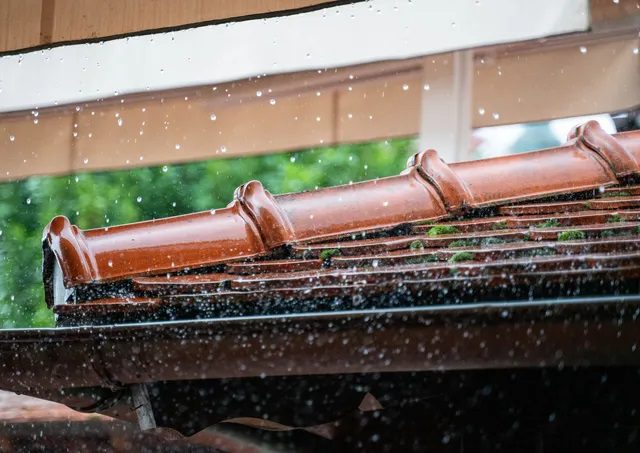
Is your home prepared to withstand unpredictable weather conditions? While it may not be a common concern, the ever-changing climate in Australia and the impending scorching summers necessitate that you can answer this question.
Australia is expected to experience rising temperatures and heatwaves in the coming years, with a surge in extremely hot days. It is crucial to ensure that your home remains cool during these hotter months, especially on days of extreme heat.
According to YourHome, we can anticipate a 25% increase in very high or extreme fire danger days, along with more severe weather events and storm surges, coupled with an overall 1-degree Celsius warming, leading to more frequent heatwaves.
What struck us in YourHome’s report is the importance of ‘designing for a changing climate.’ It involves creating flexible designs that adapt to prevailing conditions while optimizing the comfort and livability of your home.
In essence, it’s about adapting your home to climate changes and ensuring that your living space remains comfortable and functional.
By the end of this article, you’ll be well-equipped to answer the question, ‘how do you weatherproof a home?’ We’ll explore straightforward ways to weatherproof your home and prepare it for the changing climate.

8 Ways to Weatherproof Your Home Before Summer
- Sealing Windows and Doors: Unsealed gaps around windows and doors can result in 15-25% of heat loss during winter and inefficient cooling during the use of air conditioners. These gaps can be found around windows and doors, responsible for over 10% of energy loss in a typical home.
To protect your home from heavy rainfall and strong winds, use weather seals to seal any gaps or air leaks around windows and doors. Sealing internal doors also minimizes sound, light, and draughts, enhancing the door’s functionality.
Weather seals, like Cowdroy weather seals, can be installed on external doors to reduce wind, rain, light, and sound leakage, thus improving energy efficiency. Sealing your home is a straightforward method of reducing energy bills and carbon emissions by up to 25%.
- Insulated Garage Doors: The garage door is often the largest opening in your home, accounting for up to one-third of the front exterior. If it’s connected to your home, it can be a significant source of heat and energy loss, straining your heating and cooling systems.
Insulating your garage door with panels and seals is a cost-effective solution for creating an energy-efficient home and reducing your energy bills. Insulated garage doors provide a sound barrier, reduce heat loss and gain, and keep unwanted pests outside.
- Insulate Your Hot Water System: Insulating your hot water heater components can lead to energy bill savings and a reduction in heat loss. Insulation blankets can be wrapped around electric hot water units to retain heat. They can also be applied to hot water pipes, especially those externally exposed, to minimize heat loss.
However, remember that insulation blankets are not suitable for gas storage systems with pilot lights, as they can pose a fire hazard when overheated.
- Harnessing the Power of Heat Reflective Paint: To combat the Australian heat and keep your home cool, heat-reflective paint, also known as ‘cool roof paint,’ is a top choice. Your home’s roof surface absorbs a significant amount of heat, especially during the summer.
Heat-reflective paint keeps your home cooler, saving 20-40% on energy costs and reflecting up to 80% of solar radiation, preventing it from being absorbed into your home. A cooler interior reduces the need for air conditioners, lowering carbon emissions and cooling expenses. Brands like Dulux offer AcraTex 962 Cool Roof technology for maximum solar reflectance and reduced heat absorption.
- Storm-Proofing Your Garage Doors: Storm-proof garage doors are designed to withstand extreme weather conditions, from intense storms to daily exposure to sunlight and wind. Various brands use materials such as corrosion-resistant ZINCALUME steel, as seen in Colorbond doors, to create wind-resistant doors capable of enduring cyclonic winds from B&D.
If you reside in an area prone to volatile weather, upgrading to a storm-proof garage door can provide extra protection for your home.

- Sealing Decorative Concrete Surfaces: Driveways and paths are often overlooked until they are stained, cracked, or overgrown with weeds. Sealing exposed or honed aggregate driveways is an effective way to weatherproof and waterproof them. Moisture can cause flaking, peeling, bubbling, blistering, and dark spots, but decorative concrete remains durable and resilient when sealed.
Resealing your driveway every two to three years or at the first signs of wear is essential. Sealants are readily available from concrete material suppliers and hardware stores, and professionals can also provide assistance.
- Gutter Leaf Guards: Blocked gutters and drains not only lead to overflowing water but also pose a fire hazard during the summer. Gutter leaf guards are designed to keep leaves, debris, and pests out of your gutters, ensuring unobstructed water flow through the downpipes.
While gutter guards do not eliminate the need for periodic cleaning, they significantly reduce the time spent removing leaves from your gutters.
- Embracing the Benefits of Swimming Pool Covers: For pool owners, covering your pool with a pool cover is the most effective way to reduce pool heating costs. Evaporation is the primary source of energy loss in a pool, and evaporation rates depend on the pool temperature, wind speed, and humidity.
Pool covers increase heat retention, reducing evaporation by up to 97%. They also decrease maintenance costs and pool chemical consumption by 35-60%. By using a swimming pool cover, you can save on energy consumption, reduce maintenance expenses, and prevent unwanted debris and pests from entering your pool.







